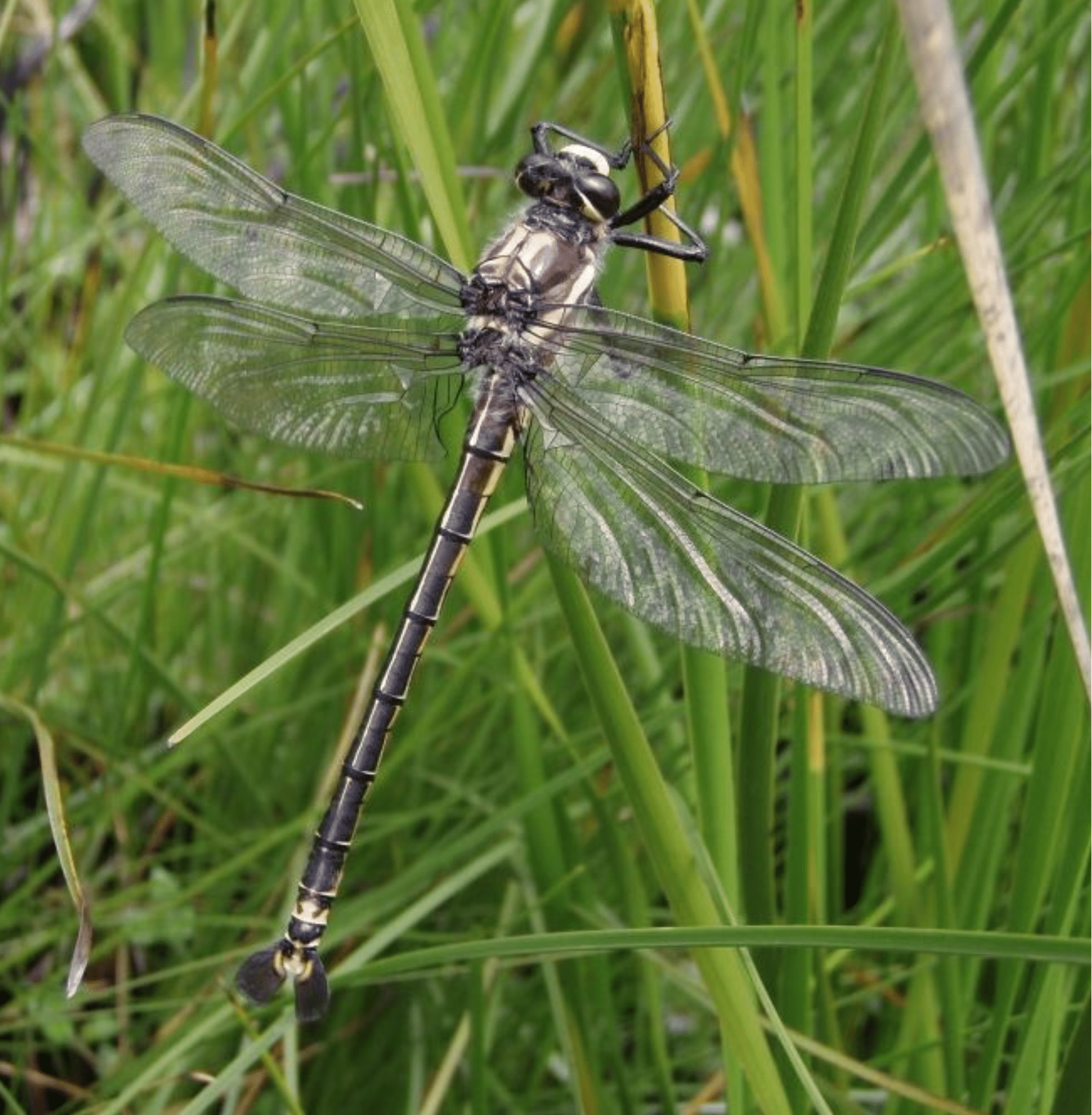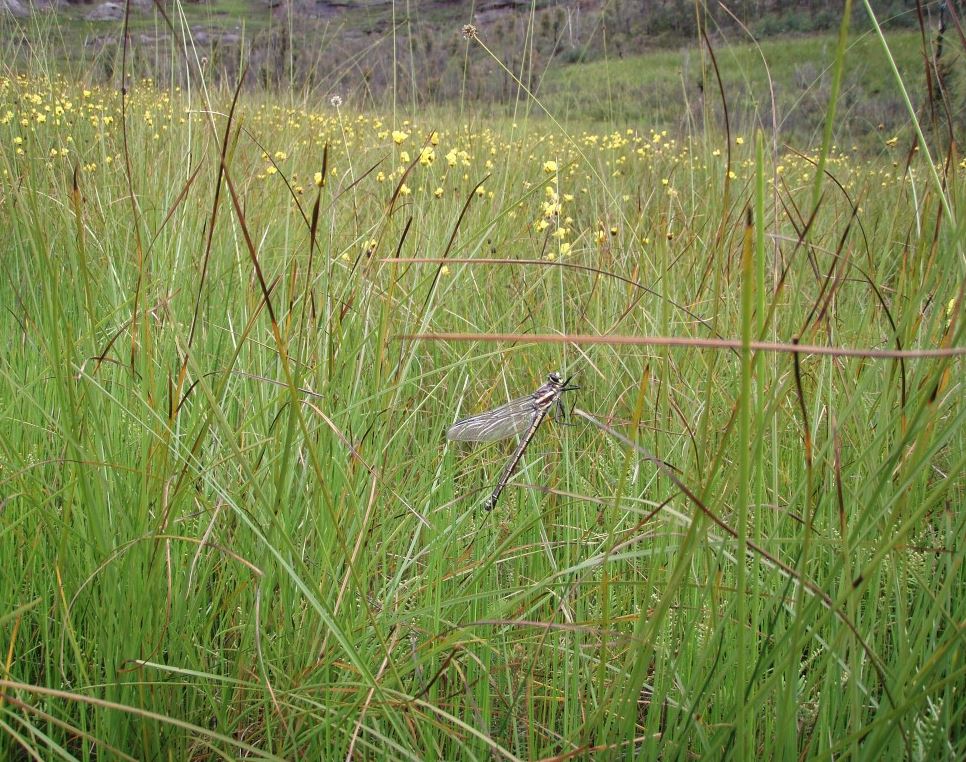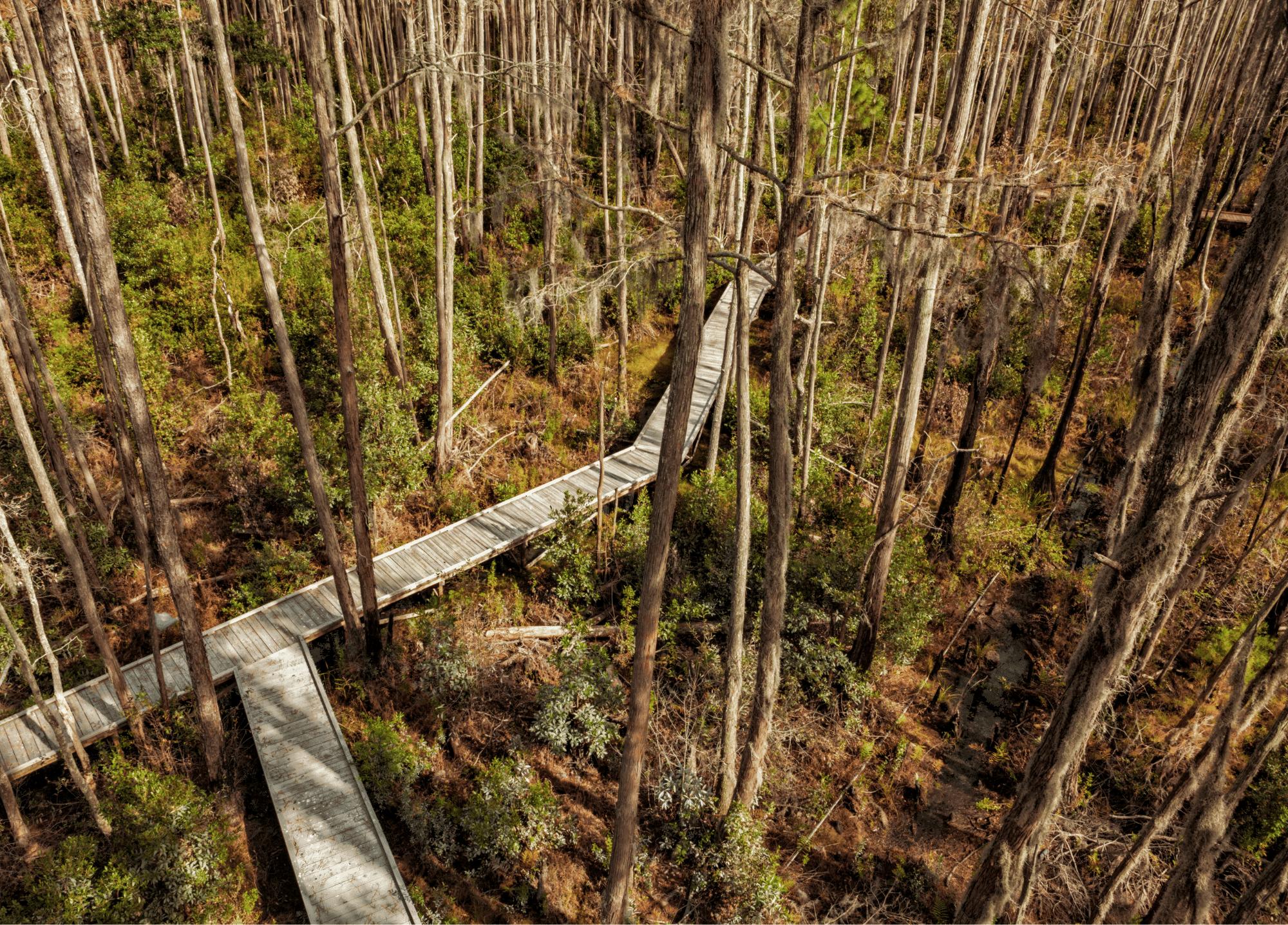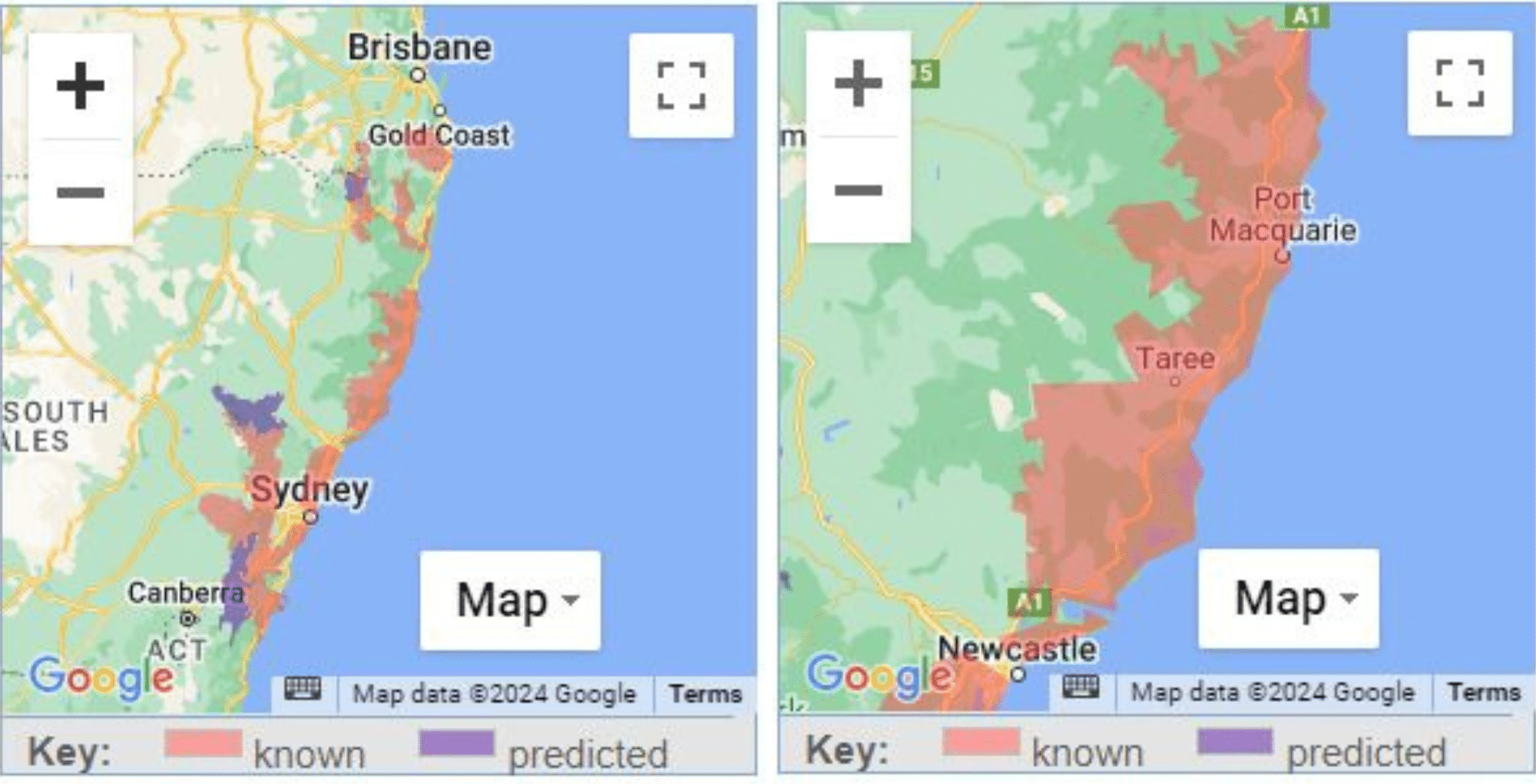An ancient species under threat
Status: Endangered
The Giant Dragonfly, also known as the Southeastern Petaltail, belongs to an ancient group of dragonflies that have been on earth since the Jurassic Period, 190 million years ago. Despite their long history, the species is now listed as endangered in NSW, largely due to habitat loss and degradation.
The Giant Dragonfly has an exceptionally long larval stage, spending up to 10 years underground. They emerge to a short-lived adult stage in late October, surviving for one summer season.
What do they look like?
The third largest dragonfly in Australia, the Giant Dragonfly has widely spaced eyes and a brownish-black segmented body with light yellow stripes along its back and sides. The males have an abdomen length of 6 – 7.5cm and a wingspan up to 11cm, while the females are a bit larger with an abdomen of 8 – 9.5cm and a wingspan up to 12.5 cm. The males are also distinguishable by the large, petal-shaped appendages at the end of abdomen.
The larvae are soft, semi-aquatic grubs that grow up to 5cm in length, with large legs for digging.

Habitat and Diet
The Giant Dragonfly is found along the east coast of NSW, living in peat swamps, bogs and wetlands.
The adult dragonflies spend most of their time perched on low lying vegetation, interspersed with short periods of flight to feed on other flying insects, such as butterflies and moths, grasshoppers and wasps.
Females lay their eggs into moss and other soft, ground layer vegetation.

The Petalura family of dragonflies, to which the Giant Dragonfly belongs, are unique in that their larvae excavate long branching burrows under the swamp which they occupy for their long larval stage. They feed on worms within the tunnels and it is thought they leave their burrows to feed on spiders, crickets and other insects, including using underwater entrances to access aquatic food sources.
Under Threat
The Giant Dragonfly is under threat due to loss and degradation of habitat as a result of climate change effects and extreme weather events, particularly bushfires and bushfire hazard reduction activities. Urbanisation has also had an effect with land development reducing habitat size and leading to reduced water quality and weed invasions.
What can you do?
There is a targeted strategy to save the Giant Dragonfly under the NSW Government Save our Species Program. This outlines a range of measures, including maintaining native vegetation buffers around swamp systems, rehabilitation of swamp habitats, ensuring that bushfire hazard reduction has minimal impact in swamp areas, and management of access tracks to swamp habitats.

On an individual level we can contribute to saving the Giant Dragonfly by keeping to approved walking trails and tracks to limit our impact on their natural habitat






